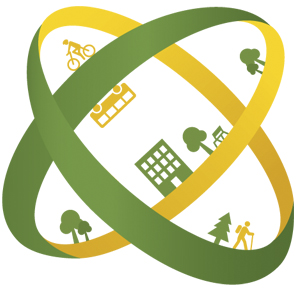Community Research Connections continually experiments with online technologies to find new ways of collaborating and bringing together diverse knowledge and ideas. We currently run collaboratories for two of research projects: Places + Spaces and Meeting the Climate Change Challenge (MC3). These are private spaces; however, we also experiment with public collaborative spaces and attempt to engage broader audiences through the Changing the Conversation project and by using various Web 2.0 tools, such as:
There are several definitions. A collaboratory is an organizational entity that spans distance, supports rich and recurring human interaction oriented to a common research area, and fosters contact between researchers who are known and unknown to each other, and provides access to data sources, artifacts and tools required to accomplish research tasks (Bos et al. 2007). William Wulf (1989) defines a collaboratory as a “center without walls, in which the nation’s researchers can perform their research without regard to physical location, interacting with colleagues, accessing instrumentation, sharing data and computational resources, [and] accessing information in digital libraries” (Wulf, 1989, p. 19). Bly's (1998) definition of a collaboratory is “a system which combines the interests of the scientific community at large with those of the computer science and engineering community to create integrated, tool-oriented computing and communication systems to support scientific collaboration” (Bly, 1998, p. 31). Rosenberg (1991) refers to collaboratories as “experimental and empirical research environments in which...scientists work...to design systems, participate in collaborative science, and conduct experiments to evaluate and improve the systems” (Rosenberg, 1991, p. 83)
 A simplified form of these definitions would describe the collaboratory as being an environment where participants make use of computing and communication technologies to access shared instruments and data, as well as to communicate with others. However, a wide-ranging definition is provided by Cogburn (2003) who states that “a collaboratory is more than an elaborate collection of information and communications technologies; it is a new networked organizational form that also includes social processes; collaboration techniques; formal and informal communication; and agreement on norms, principles, values, and rules” (Cogburn, 2003, p. 86).
A simplified form of these definitions would describe the collaboratory as being an environment where participants make use of computing and communication technologies to access shared instruments and data, as well as to communicate with others. However, a wide-ranging definition is provided by Cogburn (2003) who states that “a collaboratory is more than an elaborate collection of information and communications technologies; it is a new networked organizational form that also includes social processes; collaboration techniques; formal and informal communication; and agreement on norms, principles, values, and rules” (Cogburn, 2003, p. 86).
Bly, S. (1998). Special section on collaboratories. Interactions, 5 (3), 31, New York: ACM Press.
Bos, N., Zimmerman, A., Olson, J., Yew, J., Yerkie, J., Dahl, E., and Olson, G. (2007). From shared databases to communities of practice: A taxonomy of collaboratories. Journal of Computer-Mediated Communication 12 (2), 652-72.
Cogburn, D. L. (2003). HCI in the so-called developing world: what's in it for everyone. Interactions, 10(2), 80-87.
Rosenberg, L. C. (1991). Update on National Science Foundation funding of the “Collaboratory”. Communications of the ACM, 34 (12), 83.
Wulf, W. A. (1989). The national collaboratory – a white paper. In: Lederberg, J. and Uncaphar, K. (Eds.), Towards a National Collaboratory: Report of an Invitational Workshop at the Rockefeller University, March 17–18 (Appendix A) . National Science Foundation, Directorate for Computer and Information Science Engineering, Washington, D.C.